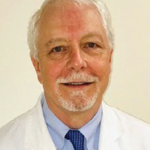A Crucial Need

Dr. Battafarano
Daniel Battafarano, DO, MACP, professor of medicine at the Uniformed Services University College of Allied Health Sciences, San Antonio, Texas, recently retired as division/program director of rheumatology at San Antonio Military Medical Center, which offers asynchronous telemedicine consults globally. As the primary author of the ACR’s 2015 Workforce Study projecting a looming shortage of rheumatologists in America, his perspective, from a workforce standpoint, is that patient care needs will drive the determination of who needs timely access to rheumatologic specialists and who does not.
Federal and state regulations, reimbursement policies, and the need to be credentialed at multiple hospitals and to carry multiple state licensures are all limiting telemedicine. COVID-19 is changing this landscape—at least in the short term—but doctors aren’t going to engage with telemedicine if it is too difficult to implement.
Dr. Battafarano describes three main applications of telemedicine in rheumatology. First is synchronous connection between a patient, a remote provider and a rheumatologist on a computer monitor or smartphone. Asynchronous communication is when a frontline provider uploads an electronic consultation, possibly with images, to which the rheumatologist can respond according to their own schedule, offering feedback and advice. The third application, he says, is reviewing electronic consult requests for triage: Will this patient benefit from a consultation with a rheumatologist?
All three applications are important in the context of the expected shortage of rheumatologists. “When I talk about the goals of telemedicine, whatever the specialty, we want the right patient seen by the right specialist at the right time in the right setting. If the patient’s history and other data are reliable, you can render a reliable opinion remotely and avoid unnecessary patient travel cost, childcare coverage and/or lost wages,” Dr. Battafarano says.
The Promise Is There

Dr. McCormick
Talbot “Mac” McCormick, MD, president and CEO of Eagle Telemedicine, Atlanta, also sees great potential for telerheumatology. Eagle is a 10-year-old, multi-
specialty practice with doctors in a dozen specialties who work remotely to provide specialist expertise to 160 to 170 contracting hospitals, typically smaller and/or rural. “We now have rheumatologists on our team and we have spoken with several hospitals and health systems over the last couple of years about their patients who now drive hours to see a rheumatologist or else spend months on a waiting list,” Dr. McCormick says.
“Our business model across platforms is that we partner with a hospital, health system or medical practice for the cost of our services and medical expertise,” Dr. McCormick says. The health system pays Eagle, which assigns it the right to bill for professional services from those encounters. Eagle hopes to launch telerheumatology later this year—subject to systemic barriers.
“In the grand scheme of things, telemedicine offers patient satisfaction, quality, patient outcomes—all the things we do that have value for the system,” Dr. McCormick says. “We’re trying to get people to think about that value equation.
“There are qualified rheumatologists interested in and capable of bringing their expertise to patients remotely,” says Dr. McCormick. Obstacles include licensure and the need to be licensed in the state where you practice, as well as the state where the patient is, although malpractice coverage has not been a barrier for Eagle. “We still find that connectivity can be a challenge, such as the lack of reliable access to broadband services.”
Cultural barriers, operational flow issues and some complexities unique to rheumatologists also exist. But Dr. McCormick doesn’t think these are insurmountable.
In rural West Virginia it can be hard for patients to visit the doctor’s office, says Dr. Rezaian. “They need someone to bring them in, and they may have to drive two hours or more to get to the clinic, which takes a toll. We could have seen them remotely to review their medications and provide pretty much the same services, while maybe seeing them in person once or twice a year,” he adds.



